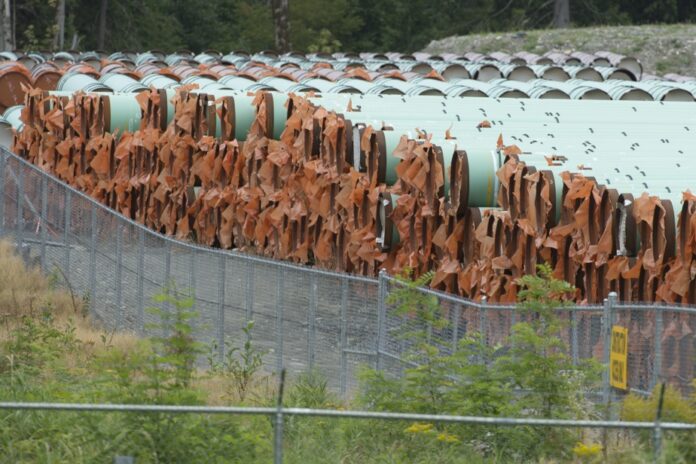(Calgary) The group behind a proposed carbon capture and storage network for Alberta’s oil sands is watching with dismay the latest regulatory hurdles related to the Trans Mountain pipeline expansion.
The New Pathways Alliance, a consortium of Canada’s largest oil sands companies, wants its $16.5 billion carbon pipeline and underground storage facility project up and running in northern Alberta d ‘by 2030.
The project, as proposed, would be one of the largest carbon capture projects in the world, connecting up to 20 carbon capture and storage facilities in northern Alberta and sequestering 10 million to 12 million annually million tonnes of carbon emissions from oil sands sites.
It’s a key part of the oil sands industry’s commitment to achieving carbon neutrality from production by 2050 — which it must do to meet Canada’s international climate commitments. The oil sands industry currently accounts for about 12% of Canada’s overall emissions.
But the New Lanes project faces its own set of political and regulatory uncertainties, which it must clear up before construction can begin. And the group’s president, Kendall Dilling, says the latest hurdles affecting the Trans Mountain pipeline project show how difficult it is to get major infrastructure projects across the finish line in this country.
“I’m not going to lie, it keeps me up at night,” Dilling said in an interview at the World Petroleum Congress this week in Calgary.
“We’re looking at (Trans Mountain) and the outcome is not good for anyone. »
The Trans Mountain Pipeline is the only pipeline system in Canada transporting oil from Alberta to the West Coast. Its expansion, currently underway, will increase its capacity to 890,000 barrels per day, compared to 300,000 currently.
The project, which is owned by the federal government, was supposed to be commissioned early next year, but now may not be ready until December 2024.
The Crown corporation that owns Trans Mountain has faced new construction problems in British Columbia, and a British Columbia First Nation opposes the company’s efforts to reroute the pipeline .
The Canada Energy Regulator heard arguments from Trans Mountain and the first nation earlier this week and is expected to make its decision on the matter shortly.
It’s the latest hurdle for a project that has already faced numerous hurdles, from environmental opposition to rising labor costs and supply chain challenges to construction problems due to extreme weather conditions.
The estimated capital cost for Trans Mountain, which was purchased by the federal government for $4.5 billion in 2018, has already climbed to $30.9 billion, and the company has calculated that its most recent woes could add $86 million additional to the final price.
The New Ways Alliance, which hopes to seek regulatory approval for its project this fall with the aim of placing its first pipeline purchase orders in early 2024, simply cannot afford to encounter such setbacks, a estimated Mr. Dilling.
“We’re doing everything we humanly can to keep this on track between now and 2030. But we’re coming to a really critical time. We are on a critical path, there is no room for maneuver,” he said.
The New Pathways Alliance is still waiting for the federal government to finalize the details of its investment tax credit for carbon capture and storage, and to unveil, as promised, a framework providing certainty to the future carbon price – which would eliminate some of the investment risk of the project.
Additionally, the Alliance recently began formal consultations with 24 Indigenous and Métis groups whose traditional territories are located near the proposed project.
One of those groups, the Cold Lake First Nation, told CBC News earlier this month that it was concerned about the project, and felt like the Alliance “is taking it away from us.” sticks in the throat.”
The New Pathways Alliance strives to address the concerns of First Nations, assured Mr. Dilling, adding that the group has always believed that “there is no project” without positive partnerships with Indigenous neighbors.
“You look across the country, you look at recent projects — stakeholder alignment is crucial, otherwise these projects can go around in circles for a long time,” he opined.















